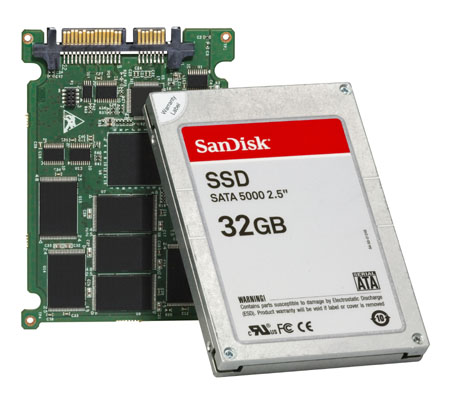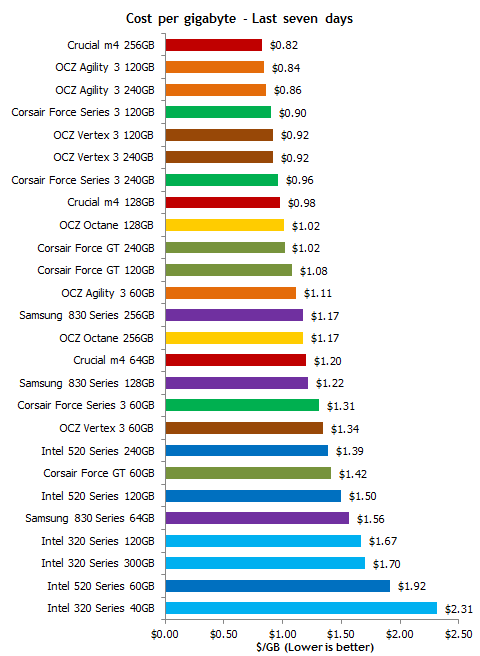

In a February article we mentioned that SSD prices would fall below one-dollar per gigabyte by the second half of 2012. Apparently that train has arrived a few weeks earlier than expected. A TechReport.com study, based on Camelegg data which tracks prices at Newegg, shows that over the previous twelve to sixteen months prices for SSDs have fallen at least 46% on average. Even more interesting is the fact that if the four highest-priced products from Intel were to be removed from the stack, the average drop in SSD prices would be greater than 50% with some Vertex SSD prices falling a huge 73%.
Plummeting SSD (Solid-State Drive) prices was only one in a list of reasons that we expressed confidence that thin-and-light ultrabook and ultrathin laptops would experience falling prices and increasingly high volume sales through and including 2013.
As of a seven day period leading up to June 21st, eight SSDs were averaging less than one-dollar per gigabyte, with prices ranging from an average of US-$0.82 to $0.98 per gigabyte. In addition to Vertex, other products with prices of less than one-dollar per GB include Crucial, OCZ Agility, and Corsair, with the Crucial m4 priced at $0.82 per gigabyte. Improved lower cost controller chips from Indilinx and Sandforce, as well as lower NAND prices have assisted declining price trends for SSDs.
Solid-state drives have numerous attributes that will entrench them in both consumer and business IT products.


SSDs List of Advantages
- Almost no heat production
- Very broad temperature range of operation
- Substantially greater shock & impact resistance
- Much faster read / write speeds
- Faster boot-up
- Dramatically lower power consumption
- Longer battery life for notebooks
- No moving parts
- Silent operation
- No vibration
- Defragmentation (De-fragging) not required, & not recommended
- Impervious to most magnetic fields

 Laptop & Tablet Parts
Laptop & Tablet Parts




















